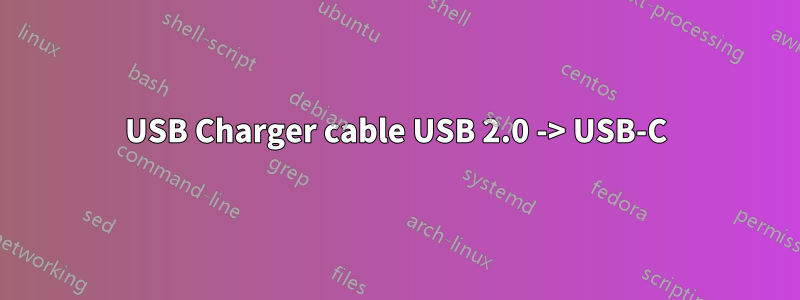
Ich habe ein Ladegerät mit USB 2.0 Typ A auf Typ C. Ich verstehe nicht, wie das aufzuladende Gerät Strom bekommt, wenn die Pins CC1 und CC2 im Typ-A-Stecker des Ladegeräts nicht vorhanden sind.
Wie erhält das aufzuladende Gerät Strom, wenn nur die USB 2.0-Leitungen sowohl in den Steckertypen A als auch C verfügbar sind?
Antwort1
Wenn es sich bei Ihrem Ladegerät um ein QC2- oder QC3-Ladegerät handelt, erfolgen die Verhandlungen über DP/DM-Leitungen.
If not, the supplied voltage will be +5VSAFE, and the capability of charger will be advertised on Type-C end. The CC pins are not present in the Type-A end of cable, but they do present in Type-C end of charging cable. If the specific cable came with specific charger, it is likely that the pull-up inside the Type-C overmold reflects the charger capability, meaning that the pull-ups on CC line can be 56k (500 mA), 22k (1500 mA), or 10k (3000mA max). The device being charged likely reads the pull-up value and takes the current accordingly.
For more accurate answer it would be advisable to identify exactly what kind of "a charger" do you have, with its specifications.
Antwort2
A USB-C to USB-A cable must have configuration resistors to tell the device that it is plugged in and what kind of connector is on the other end. Once the device detects the cable and type through the CC pins on the USB-C connector the device knows to look for a USB-A host on the other end. Getting 5 V @ 0.5 A is the minimum required power for any USB host to provide. Presence of 5 V across the Vbus and GND pins means that a host was connected. After that the device can check the data pins on if this is a USB 2.0 host or USB-BC charger. A USB 2.0 host will negotiate allowed power for the device like any other USB 2.0 device. With USB-BC there will be a set of resistors on the data pins for the host to detect, once these resistors are detected the device can know how much power the USB-BC power supply will safely provide. For anything USB that is not USB-C the maximum allowed power is 12 watts.
There was a time when there were a lot of chargers and devices that did not comply with the USB spec to get more than the 12 watt maximum allowed power. These would negotiate power over the data pins similar to how USB 2.0 or USB-BC devices would. This was relatively common on Android devices until Google stepped in to put a stop to it. Having devices that would allow more than 5 volts and 2.4 amps on the USB port was dangerous, and this could reflect poorly on Google if people were injured or devices destroyed because of a noncompliant USB charger and Android device.
I have seen that USB-PD allows for negotiation of allowed power by modulating a signal on the Vbus and GND pins but I am not aware of anyone actually using this. Because nearly every device and charger supports USB-BC it's quite possible nobody bothered to implement this protocol, at least not on any USB-A port.


